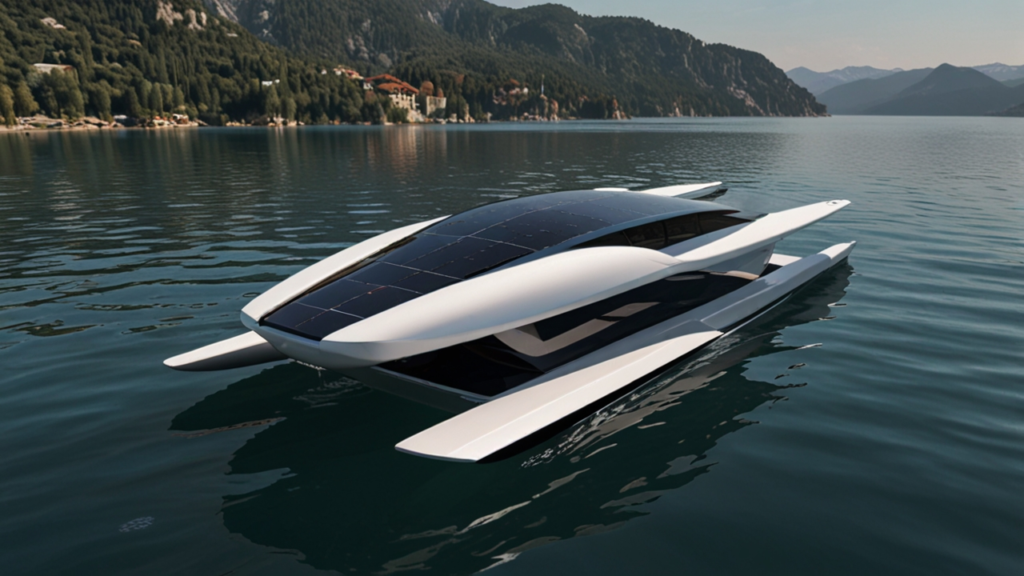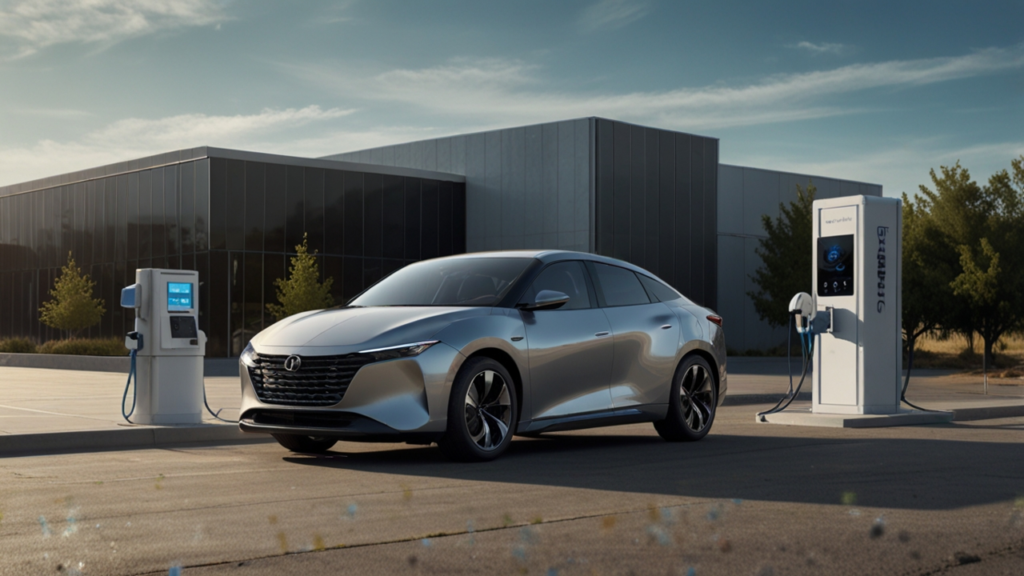Autonomous Vehicle Sensors: 6 Core Technologies
Modern transportation is undergoing a revolutionary change. Innovative detection and mapping systems now empower vehicles to interpret their surroundings with unprecedented accuracy. In this article, we delve into the world of vehicular sensor solutions.
Cutting-edge sensor designs are reshaping everyday mobility. These devices are integral to safe navigation and comfort during travel. The developments discussed here reveal a synergy between advanced research and real-world applications.
The journey of sensor technologies has been transformative. Groundbreaking milestones indicate a long history of innovation and continuous improvement. Read on to explore how these systems are driving progress in transportation.
Table of Contents
- Introduction to Autonomous Vehicle Sensors
- Evolution and History of Autonomous Vehicle Sensors
- How Self-Driving Technology Enhances Autonomous Vehicle Sensors
- LiDAR Systems and Their Applications in Autonomous Vehicle Sensors
- Real-World Case Studies of Autonomous Vehicle Sensors
- Computer Vision in Modern Autonomous Vehicle Sensors Solutions
- Future Trends: Safety Detection and Beyond
Introduction to Autonomous Vehicle Sensors
Explore more about emerging trends in Electric Vehicles.
Definition and Overview
The term “Autonomous Vehicle Sensors” refers to the advanced systems installed in vehicles that facilitate environmental perception. These detection devices include instruments that generate spatial 3D maps, monitor obstacles, and relay essential data for decision-making. Over time, these mechanisms have evolved to incorporate a blend of sophisticated hardware and smart algorithms, resulting in dependable function and heightened safety.
Early experiments employed simple radar and optical sensors for collision avoidance. With time, these instruments grew in complexity and reliability. For instance, research from the 1980s to the 2000s emphasized basic computer and radar systems, a foundation that set the stage for more elaborate devices. As development progressed, firms like Waymo have performed millions of miles using refined sensors. This progression underscores the importance of robust sensor technologies in modern mobility.
The progression of these systems offers a wide range of benefits. They reduce errors in navigation and contribute significantly to overall safety. How do you think these advanced systems will shape your future travel experiences?
Importance in Modern Mobility
In today’s fast-paced world, high-quality detection systems are essential to improved transportation safety. Vehicles equipped with these devices can respond rapidly to road hazards. The integration of high-resolution mapping and real-time environment monitoring has raised both safety and efficiency standards.
Significantly, the use of these sensors helps reduce human error in complex driving scenarios. Content based on industry studies indicates that early warning and automated braking mechanisms have saved countless lives. Moreover, they enable smoother traffic flow and enhanced travel efficiency. With growing advances, new commercial applications continue to emerge.
These innovative systems are continuously refined with the support of extensive field data and research. Their accuracy and reliability offer a promising future in transforming public and private transportation. Could these improvements influence your daily commute?
Evolution and History of Autonomous Vehicle Sensors
For deeper insights into historical trends, see Future Transport Solutions.
Historical Milestones in Sensor Development
The journey of vehicular sensor technology began decades ago. Early systems in the 1980s and 1990s set a preliminary framework using radar and simple image analysis. Researchers initiated experiments focused on collision detection using basic computer vision, laying the groundwork for future capabilities.
By the 2010s, the introduction of high-resolution mapping instruments marked a significant turning point. Notable projects like DARPA Grand Challenge and subsequent prototypes by major companies transformed early sensor concepts into dynamic applications. Detailed studies from Startus Insights (innovator research) reveal how these technologies evolved in complexity and capability.
The increase in the performance of sensor devices is directly linked to advancements in microelectromechanical systems. As new sensor types emerged, the integration of multiple data sources paved the way for sensor fusion. With these innovations, vehicles began achieving greater situational awareness. What impact do you think these historical innovations have on today’s vehicle safety?
Advancement of Sensor Fusion Technology
Sensor fusion is the process of combining data from individual sensors for a more accurate depiction of the surroundings. Initially, early-generation vehicles relied on single sensor outputs, a method that proved insufficient in adverse conditions. Integrating various inputs allowed systems to mitigate limitations such as poor lighting or signal interference.
This merging of data from optical sensors, radar, and additional instruments provided a more reliable understanding of the environment. The approach enhanced vehicle safety and enabled numerous advanced features like automated braking and lane assistance. Recent findings from earlier research indicate that continuity in sensor fusion technology drives safety levels to new heights.
In many modern vehicles, sensor fusion stands as a critical component powering real-time decision making. The unified data stream improves object identification and overall reliability. In what ways do you believe sensor fusion will evolve further to support next-generation mobility?
How Self-Driving Technology Enhances Autonomous Vehicle Sensors
Discover more about cutting-edge progress in Smart Mobility.
Integration of Sensor Technologies
Self-driving systems utilize a comprehensive blend of detection devices that work together seamlessly. The merging of data sources has enabled real-time vehicle responses. Every component, from range-finding devices to motion trackers, contributes valuable information that enhances overall performance.
For example, deep learning methods help process the vast amount of data generated, turning numerical information into actionable instructions. In this way, the vehicle constantly updates its internal map of obstacles and pathways. This continuous integration is essential for accurate navigation and hazard avoidance.
In practical terms, this integration minimizes blind spots and compensates for individual sensor weaknesses. An external review from Autopilot Review (technical comparison) explains the trade-offs between different sensor types. What do you think is the most impressive aspect of sensor integration in your vehicle?
Role of Automated Safety Systems
Automated safety protocols now play a significant role in reducing accidents and improving driver response times. Integrated systems promptly detect emergencies and initiate corrective actions. Cutting-edge devices react in less than a tenth of a second under emergency conditions.
These systems support functions like warnings, braking, and collision avoidance. They combine information from various detection elements and rely on sophisticated algorithms for rapid decision-making. The short reaction time of 0.1 seconds, as noted in independent research, provides a crucial edge in averting potential mishaps.
Such rapid responses can be life-saving in precarious scenarios. The fusion of multiple safety measures creates an almost instinctual reaction in the vehicle. How would you feel knowing your car can act faster than human reflexes?
LiDAR Systems and Their Applications in Autonomous Vehicle Sensors
Gain further inspiration from advances in Urban Transportation.
Innovations in LiDAR Technology
LiDAR represents a cornerstone in mapping and detection technology. With the shift from spinning to solid-state designs, modern instruments now boast increased reliability and lower costs. Innovations include MEMS-based designs that have emerged from entrepreneurial ventures in South Korea and the US.
The transition to smaller, more energy-efficient devices illustrates the rapid progression in this field. As evidenced by recent research, LiDAR operates independently of light levels and produces precise three-dimensional maps of the surroundings. For a detailed study on sensor innovations, refer to an analysis from Sapien.io (object detection).
This evolution expands the scope of LiDAR applications. It now supports functionalities ranging from basic obstacle detection to complex mapping in busy urban scenarios. What new opportunities do you see arising from these technological breakthroughs?
Case Examples from Industry Leaders
Industry giants have integrated LiDAR into their advanced vehicular platforms. For example, companies like Waymo and Audi have equipped their vehicles with state-of-the-art systems that blend various detection methods. Arrayed data from both LiDAR and complementary sensors has led to remarkable safety records in extensive field tests.
Successful case studies include initiatives where LiDAR systems contributed to over millions of safe miles on public roads. In addition, statistical highlights indicate that image recognition models incorporating these detection devices achieved accuracy rates nearing 95%. This impressive finding underlines the reliability of the approach.
The outcomes in real-world applications exemplify significant leaps in performance. Such collaborations serve as excellent examples of technology meeting practical needs. Do you believe that industry leaders will continue to push the limits of these technologies?
Real-World Case Studies of Autonomous Vehicle Sensors
Learn more about digital innovations at Digital Transformation.
Global Success Stories
Globally, numerous companies have successfully adopted advanced detection systems in their vehicles. In North America, Waymo has demonstrated exceptional safety by using an integrated set of detection instruments. Their vehicles have logged millions of miles, combining data from multiple sources to perfect performance.
In Europe, innovators such as Volvo and Audi have deployed these devices to boost safety in consumer vehicles while setting new standards in identification and trajectory mapping. South Korea also plays a key role, with startups developing systems that support higher autonomy levels. These efforts illustrate regional strengths and varying approaches across continents.
Such real-world applications prove the effectiveness of these systems in actual driving conditions. They raise confidence in the feasibility of advanced systems. Have you ever witnessed a technological breakthrough in transportation that inspired you?
Statistical Highlights and Data Analysis
Data plays a pivotal role in validating detection techniques. For example, image recognition algorithms on test platforms have reached accuracy levels of 94.63% in classifying safety-critical images. In addition, modern radar systems now achieve data rates of up to 1 Gbps when monitoring multiple objects simultaneously.
This analysis confirms that the continued evolution of detection systems is supported by rigorous testing and statistical evidence. Advanced techniques combine the strengths of various devices, resulting in improved data reliability and safer travel conditions. External reviews from Innoviz (industry trends) further support these breakthroughs.
Such figures prove the technology is not only conceptually sound but also field-tested and reliable. Comprehensive data ensures continuous improvement of detection devices. What statistical evidence would convince you the most about advanced vehicular systems?
Comprehensive Comparison of Case Studies
| Example | Key Feature | Impact | Region |
|---|---|---|---|
| Waymo | Custom 3D mapping | High reliability and safety | Americas |
| Audi | Advanced image processing | Enhanced lane management | Europe |
| Volvo | Integrated detection suite | Improved pedestrian detection | Europe |
| AutoL | Long-range detection | Level 3+ autonomy support | Asia |
| TuSimple | Multimodal sensor fusion | Enhanced truck safety | Americas |
Comparing global examples quantitatively invites further discussion on the role of data in these innovations. Does examining these statistics change your perspective on the progress being made?
Computer Vision in Modern Autonomous Vehicle Sensors Solutions
Advances in Camera-Based Systems
The evolution of camera-based systems has significantly transformed how vehicles perceive visual cues. Enhanced by high dynamic range and stereoscopic vision, modern optical devices capture fine details that traditional sensors might miss. These systems now combine deep learning algorithms to improve object recognition, enabling vehicles to identify everything from road signs to potential obstacles accurately.
Researchers have documented cases where image processing models reached deeply impressive accuracy levels when processing high-resolution data. Integration with other sensors further refines the overall image clarity and reliability. The development of these systems has been supported by experimental and field data, leading to continuous enhancements in performance.
Such innovations make it clear that advanced optical systems have become indispensable. They contribute over time to safer navigation and a better understanding of complex traffic scenarios. Do you believe these visual systems can someday match human perception under all conditions?
Overcoming Visual Limitations with AI
Artificial Intelligence has played a crucial role in tackling the inherent limitations of traditional camera systems. Modern algorithms adapt quickly to challenges like low light, high contrast, or adverse weather, ensuring reliable object recognition. These intelligent solutions help maintain clarity and precision even when conditions fluctuate.
In parallel with hardware improvements, AI-driven methodologies enable real-time analysis and quick responses to dynamic conditions. Consequently, vehicles can act rapidly when faced with unexpected obstacles. Technological case studies highlight that the integration of sophisticated computational techniques results in a system that exceeds the capabilities of earlier models.
The combination of AI with optical systems creates a robust network of detection and response. This synergy continuously adapts for optimal performance. What challenges can you foresee in relying on AI-based systems for complex visual tasks?
Future Trends: Safety Detection and Beyond
Emerging Sensor Technologies
Looking forward, the future holds exciting prospects for detection devices. Next-generation instruments focus on further miniaturization and increased energy efficiency. Solid-state designs and advanced digital interfaces promise to streamline operations and reduce maintenance costs.
Emerging technologies such as 4D radar and multimodal artificial intelligence integration are slated to push the boundaries further. Industry forecasts predict a compound annual growth rate of 17.5% through 2033. This prediction is backed by quantitative research and market analyses that assess global trends and technological progress.
New sensor architectures aim to improve accuracy and reduce computing demands. Such advancements are expected to transform both commercial and consumer vehicular platforms. Do you imagine future vehicles will come with even smarter detection capabilities?
Regulatory and Market Predictions
Governmental regulations and market dynamics continue to play integral roles in shaping the future landscape. In regions such as the Americas and Europe, regulatory bodies like the US NHTSA have defined specific autonomy levels. As a result, vehicles today incorporate advanced features while remaining compliant with stringent safety standards.
Market developments and mergers further drive adoption and innovation. Recent research from NHTSA (official safety) highlights how regulatory policies complement technological evolution. These policies create an environment that encourages both innovation and public trust, paving the way for widespread integration.
The interplay between regulation and market demand will be crucial in future upgrades. Collaborative initiatives among manufacturers, startups, and governmental agencies are already underway. What regulatory aspects do you think will most influence future technological developments?
Autonomous Vehicle Sensors Spotlight: A Brief Insight
This section offers a captivating glimpse into advanced vehicular detection systems without resorting to conventional terminology used in the industry. Innovative devices enable vehicles to gather spatial information and translate it into actionable cues. The shift from mechanical designs to electronic miniaturization has led to systems that are both power-efficient and remarkably precise.
By harnessing real-time data, modern vehicles achieve faster response times to external cues. Energy-saving designs and compact hardware form the foundation of this technological leap. Such systems transform intricate datasets into clear, navigational commands that enhance overall travel safety.
Creative integration across various components has produced solutions that bridge traditional mechanics with high-tech computing. This blend of hardware and software not only propels forward the current standards but also paves the way for continuous innovation. Engineers have recently introduced methods ensuring that even the smallest sensor contributes vital information for a comprehensive environmental display.
This snapshot reflects an ongoing evolution built on meticulous research and practical field applications. The remarkable progress in system compactness, efficiency, and reliability opens up new vistas for future applications. In reflection, these advancements prompt us to reimagine everyday travel, inspiring greater confidence in the technological prowess at work within modern vehicles.
The innovations discussed offer a fresh perspective into what tomorrow’s transportation might look like. As these developments continue to mature, they set the stage for groundbreaking improvements in safety and convenience. Could these emerging insights usher in a new era of intelligent mobility?
FAQ
What are the main functions of advanced vehicular detection systems?
Advanced detection systems gather and process environmental data to ensure safe navigation. They monitor obstacles, provide 3D mapping, and support automated safety interventions.
How has sensor technology evolved over the decades?
Historically, sensor technology has transitioned from basic radar and optical sensors to sophisticated systems incorporating multiple detection devices and sensor fusion methods.
What role does data fusion play in modern vehicle safety?
Data fusion combines inputs from various sensors, resulting in a clearer and more reliable depiction of the vehicle’s surroundings, which enhances decision-making in automated systems.
How do regulatory bodies influence sensor development?
Regulatory agencies set safety standards and guidelines, which drive the evolution of detection systems while ensuring that innovations meet strict compliance and reliability benchmarks.
What are the future trends in the field of vehicular detection?
Technological trends point to further miniaturization, improved accuracy with new sensor architectures, and an increased role for digital integration and AI-driven systems in shaping future mobility.
Conclusion
The exploration of advanced detection systems reveals a dynamic blend of history, innovation, and practical applications that are reshaping today’s transportation. These systems, which have evolved significantly over the decades, are now at the heart of safer and more efficient travel. Your thoughts and experiences can further enrich this dialogue, so please consider sharing your ideas.
If you have any questions or insights to share, feel free to Contact us. What aspect of these advanced systems excites you the most?
Discover more from Fabelo.io
Subscribe to get the latest posts sent to your email.



